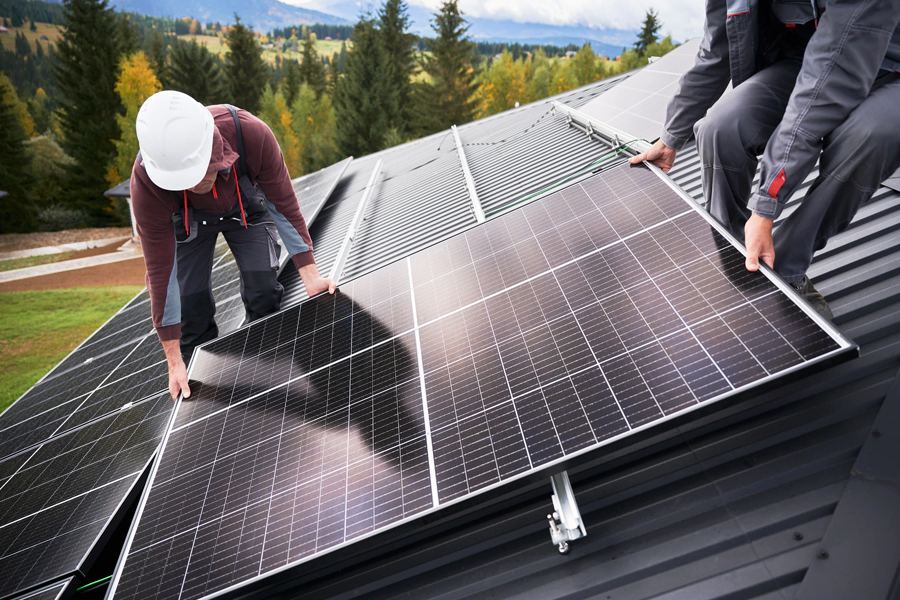Installation of solar panels photovoltaic systems
The technical name for solar electricity technologies is ‘photovoltaics’. The solar panels create electricity which can be used in your home to power lights and appliances and to feed power back into the grid.
What should installers do before accessing the roof?
- Identify foreseeable hazards, assess their risks and take action to eliminate or control these risks at the site you will be working at.
- Assess the condition of the roof and the types of roofing material, such as colourbond material and glazed tiles. Also ensure that the roof is dry before performing tasks.
- Safely access and work safely on the roof and control the risk of workers falling.
- Control the risk of falling objects.
- Safely move the material from the ground to the roof.
Safely mount the solar panels to the roof by:
- following safe work procedures for installing solar panels (these should include the manufacturer’s instructions)
- ensuring other persons who are not involved in the work area are kept away from the work area by utilising barricades or similar control systems
- checking that your tools and PPE are the right ones for the tasks to be completed and that they are properly maintained
- performing a pre-work risk assessment of the roof and roof cavity and implementing control measures.
Roof space available for solar panels
One obvious factor to be taken into consideration when mounting panels on a roof is the amount of space available on it. A typical polycrystalline or monocrystalline panel measures about 1.6m x 1m, and depending on the capacity (size in watts) of your system, for an average 2 or 3-bedroom home, you should be able to fit enough panels to significantly offset your electricity costs on one, or in a stretch, two parts of your roof. Closeness of the panels to your home is not an absolute requirement: the roofs of sheds, garages, and balconies that stand slightly apart from your house may also provide options for placement.
Inverter Installation
The inverter is commonly installed near the main panel either indoors or outside. Since it is made with solid-state electronics and performs better in cooler conditions, the inverter should be located out of afternoon sun. It can be mounted inside or out. Usually, the best location for installation is in the garage near the main electric panel.
Additional Hardware
If you decide you want a battery back-up system or need a stand-alone energy solution, The Solar Company can design and install a system that is right for you. Some back-up systems and all stand-alone systems require a gas generator (propane, natural gas, diesel, etc.). Battery banks vary in size depending on power loads but generally need 10-20 sq. ft. and may require venting.
https://suryaurza.com/photovoltaics/




